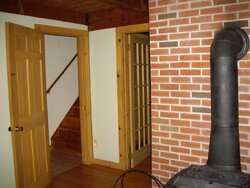Dune
Minister of Fire
I have no central A/C, and my furnace is not set up to run fan only. I'm having some trouble following your logic. Does duct heat loss, as begreen said above, not a negative factor? What do you mean by "...increasing supply to the stove room..."
I'm not comfortable running my stove 24/7. Too risky for me. Perhaps overnight soon as I trust the setup. So the house and everything in it get cool during the workday (Mon-Fri), and heating all the stuff up in a short amount of time, I'm finding, is quite the challenge. That said, I can easily get my kitchen and DR up to a tolerable (60F) level on weekends, provided the stove room is over 75F. That large gradient in temperature between the stove room (FR) and dining room I find most interesting.
Looking forward to reading other similar threads on overcoming this challenge. Good news yesterday: propane rates have been going down here, now around ~$2.50 per gallon. Yippee!
Is there something wrong with your setup which makes you feel unsafe?
Yes, bringing a cold house up to temp with a too small stove is no easy task.



